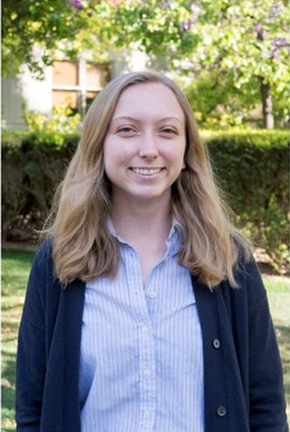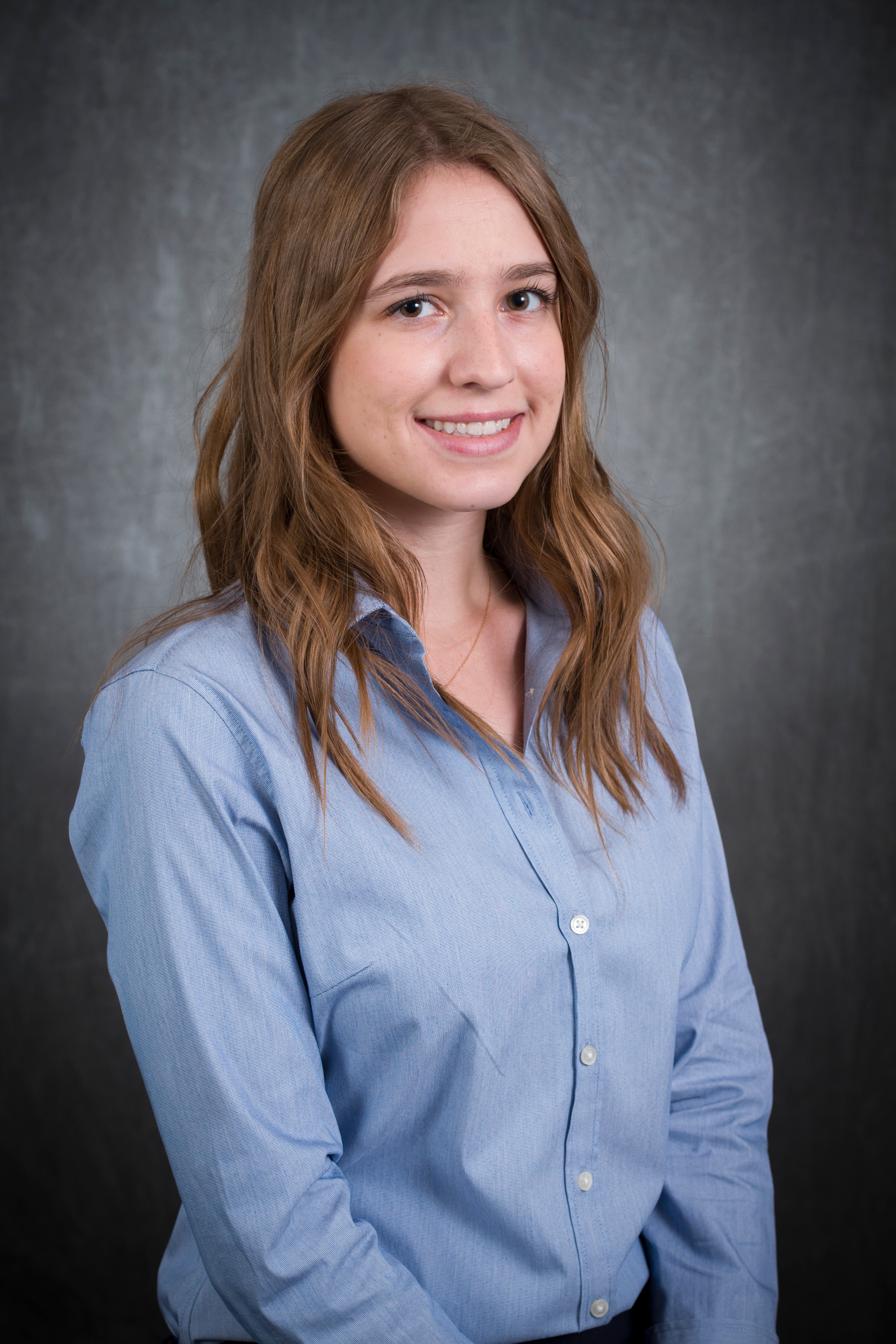3 students named Goldwater Scholars for excelling at undergraduate research

Arizona State University empowers students to find their places, like the newsroom, the trading floor or the design studio. The three new Goldwater Scholars knew right away that they belonged in the lab.
Madeleine Howell, Maeve Kennedy and Lily Whitler are among 496 winners nationwide of the Goldwater Scholarship, the most prestigious undergraduate award in the nation for students in science, math and engineering fields who aspire to research careers. They were chosen from more than 1,200 applicants.
Since 2006, ASU has produced 34 Goldwater Scholars, more than Princeton, the University of Chicago, Yale, Duke and Columbia. The University of Arizona has produced 24 Goldwater Scholars in that time. The award is named for Sen. Barry Goldwater, an Arizona native.
“The students selected as Goldwater Scholars are, without exaggeration, the absolute best STEM undergraduates in the United States,” said Kyle Mox, director of the Lorraine W. Frank Office of National Scholarships Advisement.
“These are the talented young people who will go on to be hugely impactful researchers in the future, making discoveries and scientific breakthroughs that will benefit our entire nation.”
ASU’s strong performance in the program illustrates the high quality of the undergraduate research programs and faculty mentoring at the university, said Mox, who also is associate dean of Barrett, The Honors College.
“To do so well year in and year out is no accident — it is the product of consistent hard work and strong motivation on the part of our students, our faculty and our professional staff,” he said.
The Office of National Scholarship Advisement supports students with information sessions, workshops and individual feedback on essays and applications. Earlier this year, the office announced that ASU has 37 winners of the Benjamin A. Gilman International Scholarship — the most ever — as well as 21 winners of the U.S. Fulbright student program and a Rhodes Scholar, the most elite honor of all.
Meet ASU’s new Goldwater Scholars, all three of whom are students in Barrett, The Honors College.
Madeleine Howell
Bio: Howell, a graduate of Basha High School in Mesa, is a junior majoring in chemistry and minoring in mathematics and materials science and engineering.
Madeleine Howell. Photo by Mary Zhu/School of Molecular Sciences
Her research: “My research focuses on developing novel optical feedback systems for navigating patch-clamp electrodes inside the living brain. Patch-clamp electrophysiology is the highest-resolution technique currently available for understanding neuronal dynamics. Traditionally, these electrical signals are recorded using glass micropipette electrodes with tips smaller than the size of a single cell. To induce or record a spontaneous action potential, these electrodes are manually maneuvered through the brain and suctioned to the cell membrane, forming a seal through which current can be injected and voltage can be measured. Currently, there is no navigational technique that enables neuroscientists to 'see' the neurons that they are 'patching' past 800 microns (about a millimeter) into the cortex. I am working with two graduate students in the Smith Lab, Christopher Miranda and Joel Lusk, to integrate fluorescence guided-navigation into conventional micropipette electrodes. Our aim is to use the light emitted from genetically encoded fluorescent proteins or fluorescent labels as a feedback mechanism to guide electrode movement towards neurons of interest in the deep brain.
"I got involved in research my freshman year in the lab of Dr. Barbara Smith in the School of Biological and Health Systems Engineering. At the time I was a student in Dr. Smith’s biomedical product design and development course and I reached out after I read about the noninvasive medical imaging modalities her group was working on.
“After a year of research in the Smith group on noninvasive diagnostic technologies, I decided that I wanted to delve into the field of ultrafast spectroscopy and I did a National Science Foundation Research Experiences for Undergraduates in the lab of Dr. Theodore Goodson III at the University of Michigan. That summer, in between my sophomore and junior year, I had the opportunity to characterize candidate materials for organic light emitting diodes using ultrafast and nonlinear spectroscopic techniques.”
What sparked her interest in doing research at ASU: “In high school I took honors science research and we each wrote a white paper and sent it to researchers at local universities. We partnered with a researcher at ASU and carried out what was pretty much a science fair project, which we presented at the Arizona Science and Engineering Fair. That experience in research got me really excited about it and that’s why I sought it out my freshmen year.
“The research opportunities at ASU drew me and also, being close to home. … I’m a triplet and all three of us are here (at ASU).”
What she does outside the lab: “I enjoy doing STEM outreach in the community and I have volunteered for the last year with Graduate Partners in Science Education, a graduate student-run organization that teaches ASU graduate students how to become more effective science educators. I was introduced to this organization through my older sister, Abigail Howell, who is a PhD student in molecular and cellular biology at ASU and I co-taught a science club with her at Eagle College Prep for the past semester. We did a squid dissection, which is super fun. And we also let them swab different parts of their school and we put it in the incubator so they could see what bacteria was growing.”
What’s ahead: “I’m hoping to do a PhD in chemical biology and after that I’d like to pursue an academic research career.”
Maeve Kennedy
Bio: Kennedy, a graduate of Westwood High School in Mesa, is a junior majoring in chemical engineering and minoring in Mandarin. She is a Flinn Scholar.
Maeve Kennedy
Her research: “I am an undergraduate researcher in Mayo Clinic’s Center for Regenerative Medicine in the Head and Neck Regenerative Medicine Laboratory. This research aims to engineer an implantable, 3D porous substrate to induce tissue regeneration in the larynx, restore function and eliminate the need for immunosuppression. My role is to employ electrospinning techniques to create a fibrous scaffold that mimics the extracellular matrix, and when combined with a rigid, 3D-printed implant will serve as the site for epithelial tissue regeneration in the airway. My work involves fabricating and characterizing electrospun hydrogels for their nanomechanical and morphological properties, as well as evaluating cell adhesion, infiltration, and proliferation when implanted in vivo. This research will restore the ability to speak, breathe and swallow for patients with laryngeal cancer, voice disorders and laryngeal trauma."
What sparked her interest in doing research at ASU: “I was on the robotics team in high school and that was how I first got interested in the application of math and science and working in teams and having a problem that you want to solve.
“There are so many opportunities at ASU because it’s such a large school.
“The summer before I started at ASU, I did the Fulton Grand Challenge Scholars Program Summer Institute, and I went on a tour of Dr. Vincent Pizziconi’s lab, Bioinspired Complex Adaptive Systems Laboratory, and I saw the research he was doing. I thought it was really interesting so I asked him if I could join his lab and I really liked it ever since then. It’s been a really good way to see the application of what I learn in my classes to a real-life problem that can help people.
“I started out doing basic science research so I was characterizing materials and looking at their different physical and chemical properties. Now I’ve moved on to doing cellular work, so seeing how those materials would interact when you implant them in the body. I started out volunteering. This semester I’m the Mayo Clinic special research student."
What’s ahead: “This summer I’m doing the Summer Undergraduate Research Fellowship program. So I’ll be continuing in the same lab.
“I want to do an MD-PhD program and I would like to do that in biomedical engineering. That will really help me to see things go from the bench to the bedside. So I will get to work on the problem and use my engineering but I also get to be the one to apply it and see directly how it affects people.”
What she does outside the lab: “I’m in Fulton Ambassadors. I give tours of the campus and I like being able to tell high school students everything I like about ASU. I’m also in the Grand Challenge Scholars Program. As a part of that you take different courses so I studied abroad in China and took engineering economics courses, which help make you a more well-rounded engineer.”
Lily Whitler
Bio: Whitler, a graduate of Desert Edge High School in Goodyear, is a junior majoring in physics and math.
Lily Whitler
Her research: “I work in the Low-Frequency Cosmology Lab. I thought about applying for the Goldwater Scholarship last year but I decided to get another year of research experience. I had a summer internship in Germany, where I was working with a radio telescope, looking at nearby galaxies and trying to understand cosmic magnetism. I just finished my honors thesis.
"My research is in a subfield of astrophysics called 21-cm cosmology, which uses a specific spectral line of hydrogen with a wavelength of 21 centimeters to probe the universe as it was a few hundred million years to approximately a billion years after the Big Bang. This era is called the Epoch of Reionization, or the EoR. The EoR is extremely difficult to observe — one team, led by ASU’s own Professor Judd Bowman, has made a tentative detection, but it’s the only one to date — due to challenges such as bright emission from our own galaxy and nearby galaxies, instrumental effects, Earth’s ionosphere and more. My research focuses on one of these challenges, radio frequency interference (RFI). I work with data from a radio telescope currently under construction in South Africa, the Hydrogen Epoch of Reionization Array, to understand the effects of RFI on the measurement we are trying to make. In particular, I am trying to understand how errors introduced by RFI and RFI excision impact our ability to detect the EoR, and eventually, the goal is to understand how these errors might influence our estimation of astrophysical parameters during the EoR."
What sparked her interest in doing research at ASU: “I’ve known since middle school that I wanted to do research. I did a project in middle school on the periodic table. ASU is a huge university and I knew that this is definitely one of the best places to do research.”
What’s ahead: “I’m going to Harvard this summer for more research in a National Science Foundation-funded research experience for undergraduates. There are sites around the country and they send undergraduates to those sites for 10 weeks to do research with faculty. After graduating, the hope is to get a PhD in astrophysics.”
What she does outside of the lab: “There are a lot of opportunities to interact with the public at things like homecoming and SESESchool of Earth and Space Exploration open house and Night of the Open Door. I’m very big into science communication and outreach. I’m a member of the Society of Physics Students club. At every outreach event we sit at a table and do physics demonstrations and we get to explain to children and adults what physics is. I am also an undergraduate mentor in the Sundial Project, an organization dedicated to fostering a diverse community in physics and related fields.”




